Since March 2015, Jews living abroad have the right to obtain the Portuguese nationality if they can prove to be descendants from the Sephardic Jews – Marranos – who were persecuted and banned from Portugal more than 500 years ago. At that time an estimated 200.000 were imposed to escape the Iberian peninsula and fled to the Ottoman Empire – present-day Turkey – North Africa and a smaller number to France, England and the Netherlands.
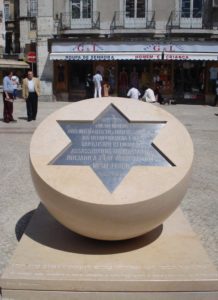 In the last four years over 37.000 Jews have applied for a passport. Around 20% succeeded in getting one, allowing them to travel visa-free in the EU. The requests mainly came from Israel and Turkey, but also from Brazil, Argentina, the US and more recently the UK due to Brexit.
In the last four years over 37.000 Jews have applied for a passport. Around 20% succeeded in getting one, allowing them to travel visa-free in the EU. The requests mainly came from Israel and Turkey, but also from Brazil, Argentina, the US and more recently the UK due to Brexit.
The overwhelming majority of applicants from Israel are between 20 and 45 years old. ‘Many ask for it in view of their children – so that these can study in Europe – others for emotional reasons as if looking for a certain justice to be done’, declares Ruth Calvão, president of the Jewish Study Centre.
‘In the case of Turkey, the country’s political instability is important. People there no longer feel safe as Jews. If there is an opportunity to obtain a European passport, they go for it.’
 Descendants to Muslims expelled from Portugal in 1496 now also want to be included in the amnesty, that has seen thousands of Sephardic Jews from all over the world reclaim their Portuguese nationality.
Descendants to Muslims expelled from Portugal in 1496 now also want to be included in the amnesty, that has seen thousands of Sephardic Jews from all over the world reclaim their Portuguese nationality.
‘If there is a community of Muslims who have documents that prove they descend from Portuguese expelled, they should have the same right’, says David Munir, leader of the Lisbon mosque. ‘Indeed, it’s a question of equity and justice’, declares historian Filomena Barros from the Évora University in the newspaper Expresso.
 Many of the expelled Jews have maintained the Portuguese language (or Ladino, a merger of Castilian and Portuguese), the religious and food rites of Jewish worship in Portugal and preserved family surnames, records, objects kept for generations and documents proving their Portuguese origin.
Many of the expelled Jews have maintained the Portuguese language (or Ladino, a merger of Castilian and Portuguese), the religious and food rites of Jewish worship in Portugal and preserved family surnames, records, objects kept for generations and documents proving their Portuguese origin.
Muslims haven’t. They have instead been assimilated into North African populations at which it is difficult to prove whose family came from Portugal and whose not.
Aproveite a semana Enjoy the week (pic Público)
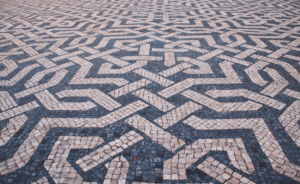
 Lisbon is Europe’s Green Capital 2020. A recognition of the work the city has been done over the past years towards a greener and more people-friendly city (
Lisbon is Europe’s Green Capital 2020. A recognition of the work the city has been done over the past years towards a greener and more people-friendly city (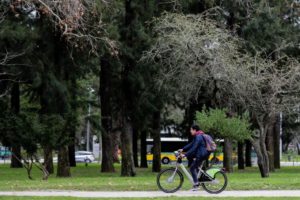 Extension of
Extension of 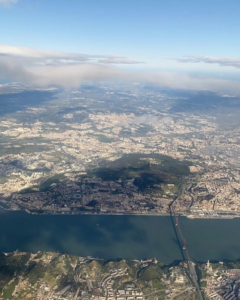 To date, the capital has around 800.000 trees. Lisbon’s biggest – 10 km² sized – Monsanto park, not only generates much-desired shadow but captures CO2 as well. One of the first initiatives of the City Council in January has been the planting of
To date, the capital has around 800.000 trees. Lisbon’s biggest – 10 km² sized – Monsanto park, not only generates much-desired shadow but captures CO2 as well. One of the first initiatives of the City Council in January has been the planting of 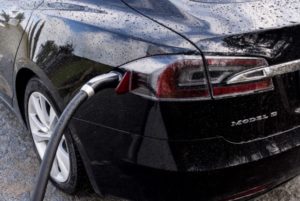 Although the sale of electric cars doubled in 2019, compared to the previous year, there are only 1000 public
Although the sale of electric cars doubled in 2019, compared to the previous year, there are only 1000 public  It is difficult to understand why the city is mobilized to be the Green Capital 2020 when major political decisions point into the
It is difficult to understand why the city is mobilized to be the Green Capital 2020 when major political decisions point into the 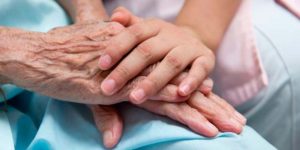 In Portugal – where palliative care is no priority – a first training course of end-of-life doulas has started last September.
In Portugal – where palliative care is no priority – a first training course of end-of-life doulas has started last September. The term doula originates from ancient Greece meaning a helping individual; a servant or in extreme cases, a slave. Since the 1960s the term is in use for women who support pregnant mothers during childbirth. Unlike midwives, they do not serve in a medical capacity.
The term doula originates from ancient Greece meaning a helping individual; a servant or in extreme cases, a slave. Since the 1960s the term is in use for women who support pregnant mothers during childbirth. Unlike midwives, they do not serve in a medical capacity. ‘It will be up to the doula to act as an intermediary between the needs of each other, to try to harmonize conflicts’, explains nurse
‘It will be up to the doula to act as an intermediary between the needs of each other, to try to harmonize conflicts’, explains nurse 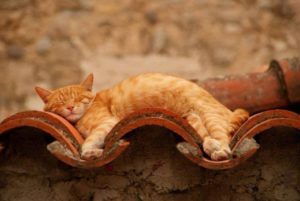 The work of doulas doesn’t replace that of health professionals and has nothing to do with
The work of doulas doesn’t replace that of health professionals and has nothing to do with  What began in a country with a large following Christianity as an alternative food to the Church’s fasting of meat during Lent, later became associated with Christmas. The traditional meal is called Consoada. It consists of boiled salt-dried codfish – soaked for 2 or 3 days to remove most of the salt – boiled potatoes, boiled eggs, boiled chickpeas, and boiled cabbage accompanied with a dressing of chopped raw onion, garlic, parsley, and lots of olive oil!
What began in a country with a large following Christianity as an alternative food to the Church’s fasting of meat during Lent, later became associated with Christmas. The traditional meal is called Consoada. It consists of boiled salt-dried codfish – soaked for 2 or 3 days to remove most of the salt – boiled potatoes, boiled eggs, boiled chickpeas, and boiled cabbage accompanied with a dressing of chopped raw onion, garlic, parsley, and lots of olive oil! Cod (bacalhau) is the nation’s favourite dish. According to the locals, there are 365 different ways to prepare it. Well-known
Cod (bacalhau) is the nation’s favourite dish. According to the locals, there are 365 different ways to prepare it. Well-known  The fish isn’t native to Portuguese waters. The Vikings – who used to take air-dried cod on their sea voyages – probably introduced bacalhau in Portugal. To preserve it longer, the Basques went a step further by salting the fish before drying.
The fish isn’t native to Portuguese waters. The Vikings – who used to take air-dried cod on their sea voyages – probably introduced bacalhau in Portugal. To preserve it longer, the Basques went a step further by salting the fish before drying.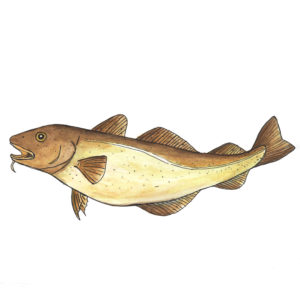 Traditional fishing far away from home was easier said than done. Each fisherman was assigned a dory – a small flat-bottomed fishing boat – which was lowered from the mothership into the ice-cold waters once they reached the banks of Newfoundland. The fisherman then ventured all alone into the foggy sea and was left to his own till his boat was filled the day’s catch. The documentary
Traditional fishing far away from home was easier said than done. Each fisherman was assigned a dory – a small flat-bottomed fishing boat – which was lowered from the mothership into the ice-cold waters once they reached the banks of Newfoundland. The fisherman then ventured all alone into the foggy sea and was left to his own till his boat was filled the day’s catch. The documentary 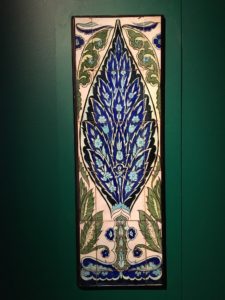
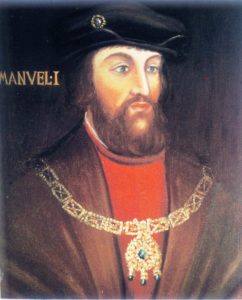 This balance began to fall apart in the 14th century, when the trend to isolate the non-Christian communities intensified, resulting in segregation laws and Jewish and Moorish quarters. Discrimination against Jews and Muslims grew steadily culminating in the Edict of Expulsion – signed by King
This balance began to fall apart in the 14th century, when the trend to isolate the non-Christian communities intensified, resulting in segregation laws and Jewish and Moorish quarters. Discrimination against Jews and Muslims grew steadily culminating in the Edict of Expulsion – signed by King 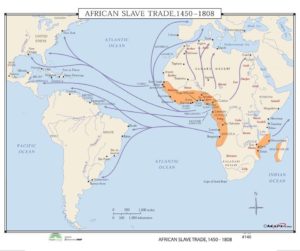
 The dirtiest work practiced by enslaved African women was that of collecting and carrying human waste, because of the weight of the excrement pot, its filthy content and the long distances they had to travel with it on their head. Not only in ancient Lisbon was the black women the hand that cleaned, even in our modern society this phenomenon continues to be very persistent!
The dirtiest work practiced by enslaved African women was that of collecting and carrying human waste, because of the weight of the excrement pot, its filthy content and the long distances they had to travel with it on their head. Not only in ancient Lisbon was the black women the hand that cleaned, even in our modern society this phenomenon continues to be very persistent!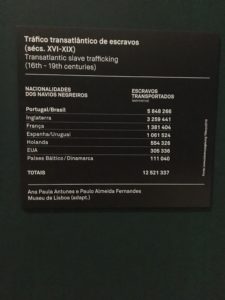
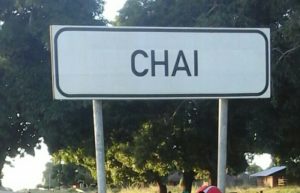 There are roughly two ways to say tea in the world. One is like the English expression – thee in Dutch, tee in German or thé in French. The other is a variation of cha – chay in Russian, chai in Swahili or shay in Arabic. Both variations come from China. The words that sound like cha spread across the land, the tea saying spread over water.
There are roughly two ways to say tea in the world. One is like the English expression – thee in Dutch, tee in German or thé in French. The other is a variation of cha – chay in Russian, chai in Swahili or shay in Arabic. Both variations come from China. The words that sound like cha spread across the land, the tea saying spread over water.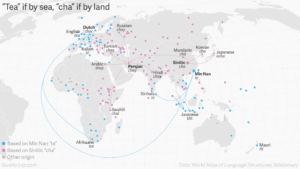 But the Chinese character for cha is pronounced as te in the Min Nan variety of Chinese, spoken in the coastal province of Fujian.
But the Chinese character for cha is pronounced as te in the Min Nan variety of Chinese, spoken in the coastal province of Fujian. Although it’s fairly commonly known that tea originated in China, it is far less known that it was a particular Portuguese woman, who inspired its popularity in England. Let’s go back to 1662, when
Although it’s fairly commonly known that tea originated in China, it is far less known that it was a particular Portuguese woman, who inspired its popularity in England. Let’s go back to 1662, when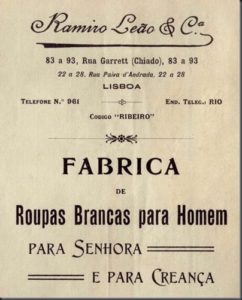 In the heart of Lisbon – on the Santana hill between the Travessa da Pena and the Beco de São Luis – used to be the clothing manufactory of Ramiro Leão.
In the heart of Lisbon – on the Santana hill between the Travessa da Pena and the Beco de São Luis – used to be the clothing manufactory of Ramiro Leão.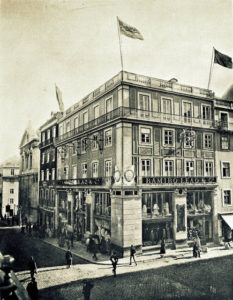 Ramiro Leão (1857-1934), born in Gavião moved young to the capital, where he became one of the most powerful merchants and founder of the cosmopolitan warehouse Ramiro Leão & Co (nowadays United Colors of Benneton) in the glamorous Chiado neighbourhood.
Ramiro Leão (1857-1934), born in Gavião moved young to the capital, where he became one of the most powerful merchants and founder of the cosmopolitan warehouse Ramiro Leão & Co (nowadays United Colors of Benneton) in the glamorous Chiado neighbourhood.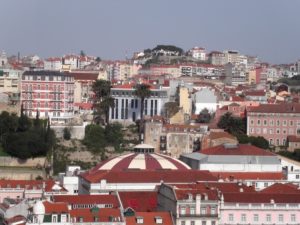 Since the old factory broke down, it experienced a complete facelift and is nowadays a graceful blue eye-catcher in the skyline of Lisbon with nine apartments, a lush Mediterranean garden and a magnificent city view.
Since the old factory broke down, it experienced a complete facelift and is nowadays a graceful blue eye-catcher in the skyline of Lisbon with nine apartments, a lush Mediterranean garden and a magnificent city view. In protest against this dismissal, a massive strike takes place the next day outside the gates of the factory. The strikers look for Ramiro Leão but he refuses to recognize the Union and its members. The peaceful protest lasts about four and a half hours and is finally swept away by military force.
In protest against this dismissal, a massive strike takes place the next day outside the gates of the factory. The strikers look for Ramiro Leão but he refuses to recognize the Union and its members. The peaceful protest lasts about four and a half hours and is finally swept away by military force. It all began hundreds of years ago (
It all began hundreds of years ago (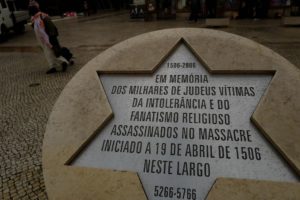 King Manuel, who was not pleased with this prerequisite, came up with an alternative, that Jews would be allowed to stay if they converted to Christianity. Some did and became New Christians (Conversos), others
King Manuel, who was not pleased with this prerequisite, came up with an alternative, that Jews would be allowed to stay if they converted to Christianity. Some did and became New Christians (Conversos), others 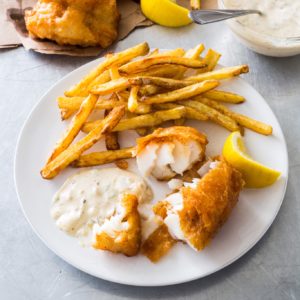 But how did fish and chips ended up being served together? There are many claims about who created the pairing. Most trace it back to the early 1860s when Joseph Malins, a Jewish immigrant, opened up a fish and chips shop in London. Other theories point to John Lee, a man from Mossley, near Manchester, who ran in 1863 a ‘chipped potato’ restaurant that sold the popular combination.
But how did fish and chips ended up being served together? There are many claims about who created the pairing. Most trace it back to the early 1860s when Joseph Malins, a Jewish immigrant, opened up a fish and chips shop in London. Other theories point to John Lee, a man from Mossley, near Manchester, who ran in 1863 a ‘chipped potato’ restaurant that sold the popular combination.
 In its back the former Medical-Surgical School – now the Faculty of Medical Sciences of the New University of Lisbon – at its feet an immense heap of marble plates engraved with thanks for graces and miracles performed. Remarkable is the complete absence of religious symbols on these ex-votes. Was the figure in bronze on the pedestal a prestigious doctor, a saint or both?
In its back the former Medical-Surgical School – now the Faculty of Medical Sciences of the New University of Lisbon – at its feet an immense heap of marble plates engraved with thanks for graces and miracles performed. Remarkable is the complete absence of religious symbols on these ex-votes. Was the figure in bronze on the pedestal a prestigious doctor, a saint or both? Dr Sousa Martins (1843-1897) gave special relevance to the doctor-patient relationship, teaching his students at the Hospital São José (St Joseph’s hospital) not only to treat but most of all to cherish the patients. One of his lessons was that if a doctor had nothing to relieve the suffering of the patient, he would still have a smile. Although famous as a pioneer in teaching, a brilliant scientist and doctor of the Royal Family, he never liked being credited with such notoriety and affirmed himself as ‘progressive and Freemason’.
Dr Sousa Martins (1843-1897) gave special relevance to the doctor-patient relationship, teaching his students at the Hospital São José (St Joseph’s hospital) not only to treat but most of all to cherish the patients. One of his lessons was that if a doctor had nothing to relieve the suffering of the patient, he would still have a smile. Although famous as a pioneer in teaching, a brilliant scientist and doctor of the Royal Family, he never liked being credited with such notoriety and affirmed himself as ‘progressive and Freemason’. Sousa Martins gained enormous prestige in his fight against tuberculosis – which at that time reached epidemic proportions in Lisbon – and his name will forever be linked to Portugal’s first sanatorium in the Serra da Estrella, a mountainous region in the centre of the country.
Sousa Martins gained enormous prestige in his fight against tuberculosis – which at that time reached epidemic proportions in Lisbon – and his name will forever be linked to Portugal’s first sanatorium in the Serra da Estrella, a mountainous region in the centre of the country.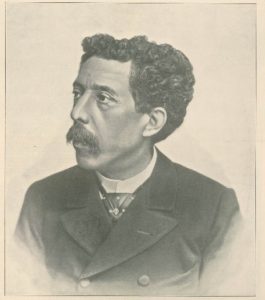 As a dedicated physician, he always was in direct contacts with his patients. The – at that time incurable – infectious disease he fought so hard during his medical career, coupled with a heart injury, eventually killed him.
As a dedicated physician, he always was in direct contacts with his patients. The – at that time incurable – infectious disease he fought so hard during his medical career, coupled with a heart injury, eventually killed him.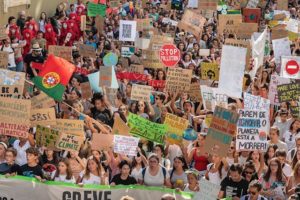 Portugal prepares to vote in Sunday’s general election.
Portugal prepares to vote in Sunday’s general election.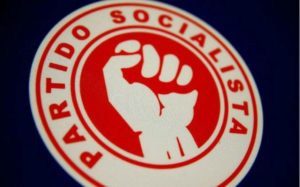 For the ruling Socialist party (PS) climate change adaptation is also needed. But that isn’t enough. The party defines concrete targets for 2030 and others for 2050, such as carbon neutrality. The PS wishes to reinforce the capacity of wind farms and – faced with extreme weather – extend forecasting and warning systems. Empowering farmers ‘to adopt good practices’ is also called for.
For the ruling Socialist party (PS) climate change adaptation is also needed. But that isn’t enough. The party defines concrete targets for 2030 and others for 2050, such as carbon neutrality. The PS wishes to reinforce the capacity of wind farms and – faced with extreme weather – extend forecasting and warning systems. Empowering farmers ‘to adopt good practices’ is also called for. The Left Bloc (BE) is in favour of a Climate Law, an Energy Base Law and a Ministry of Climate Action. The far-left party advocates the end of fossil fuel car production by 2025 and coal-fired power generation by 2023, in the meantime accelerating solar production. It also intends to ban cars from city centres and strives for free public transport, favouring investment in ‘rail mode’.
The Left Bloc (BE) is in favour of a Climate Law, an Energy Base Law and a Ministry of Climate Action. The far-left party advocates the end of fossil fuel car production by 2025 and coal-fired power generation by 2023, in the meantime accelerating solar production. It also intends to ban cars from city centres and strives for free public transport, favouring investment in ‘rail mode’. The millennium Animal and Nature party (PAN) – founded in 2009 – wants vegetarian meals at state-sponsored events, prevention of any exploitation of hydrocarbons and the closure of all coal plants by 2023. Furthermore financial benefits for cycling to work, measures to reduce car traffic, restrictions on night air traffic and the suspension of the construction of a new airport.
The millennium Animal and Nature party (PAN) – founded in 2009 – wants vegetarian meals at state-sponsored events, prevention of any exploitation of hydrocarbons and the closure of all coal plants by 2023. Furthermore financial benefits for cycling to work, measures to reduce car traffic, restrictions on night air traffic and the suspension of the construction of a new airport. However, the level of commitment of all six major parties is far too low, argues a group of independent citizens,
However, the level of commitment of all six major parties is far too low, argues a group of independent citizens, 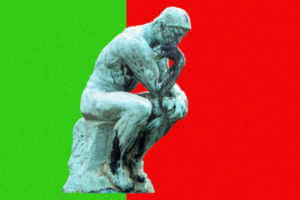 The polls suggest António Costa’s Socialist party will win but fall short of an absolute majority in parliament.
The polls suggest António Costa’s Socialist party will win but fall short of an absolute majority in parliament.